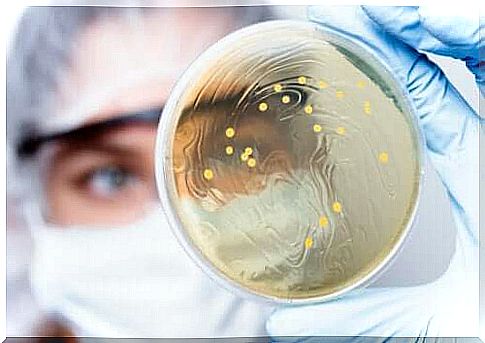What Is A Stool Culture?
Gastrointestinal illnesses involve symptoms such as diarrhea, abdominal pain, or blood in the stool. Stool cultures are detection methods for discovering the pathogens that cause them.

Stool culture or fecal culture is an effective method in identifying pathologies of the digestive system that are associated with infections. In addition, it is a usual mechanism for carrying out certain scientific studies which offer conclusions on the presence of bacteria and parasites in the intestine.
We are often infected with parasites, viruses and bacteria that create different settings for gut discomfort. In addition, there are pathologies that are expressed through bleeding in the stool. This is the case with colitis, gastric cancer and stomach ulcers. For these last pathologies and for other cases, a stool culture is an obligatory detection test.
About microbiological cultures
A microbiological culture is a method which is based on the multiplication of microorganisms in a sterile medium, generally bacteria, to facilitate the detection of a pathogenic agent responsible for diseases. Ultimately, it is about providing microorganisms with the ideal environment for their development.
The inoculations of biological samples from patients come from sputum, saliva, pieces of skin or stool. They are placed in small containers called Petri dishes, with a solid substance in them that contains agar-agar.
Many pathogens have specific growth needs. C ach culture medium is therefore tailored depending on the microorganism sought. Some of these settings are:
- Availability of adequate nutrients for bacterial growth
- Presence or absence of oxygen and other gases
- Adequate humidity conditions
- Environmental light
- Acidity or alkalinity
- Temperature
- Sterility of the environment
Depending on the types of microorganisms you want to find, the conditions in the culture media must be different. Once their growth has been observed in the dish, samples are isolated. They are then observed under a microscope to identify the concrete species responsible for the disease.
As various scientific sources note, there are many types of stains for identifying bacteria. For the dye, we place a dye that the microorganisms absorb, then taking this color. The one that is used the most, for medical purposes, is the Gram- type stain .

What is a stool culture?
A stool culture is nothing more than a microbiological culture based on the collection of stool as a sample from the sick patient. It is mainly used to study cases of persistent or recurrent diarrhea with no known reason.
Thus, collection of fecal samples becomes necessary in infectious enteric settings that do not improve after two or three days. Some of the pathogenic microorganisms that can be identified through stool cultures are Salmonella, Campilobacter, Helicobacter, Shigella, Yersinia, Clostridium difficile and Staphylococcus aureus .
Obtaining the sample
Here are the steps to follow to collect the stool culture sample:
- The patient’s stool is collected in a wide-spouted container with an airtight seal. The minimum sample volume should be two to four grams of pasty stools and five to ten milliliters of watery stools
- Fecal samples that have been exposed to the environment for two hours or more are not admissible, as are those contaminated with urine or toilet paper remains.
- A very small sample of the patient’s stool is taken. It is then sown in the culture medium suitable for the proliferation of pathogenic microorganisms
- If, with the first sample, the presence of enteropathogens is not detected, then it is necessary to collect two additional samples, on other days
- Once the pathogenic bacterium has been identified, the description of the appropriate antibiotic is carried out.
What can we observe in the fecal cultures?
These microbiological cultures are used to identify different pathologies through the identification of bacteria which is done through the inoculation of the fecal sample and its subsequent staining. We also examine possible eggs or parasite remains.
According to the Center for Disease Control and Prevention (CDC), parasites like tapeworm are identified through stool cultures because their eggs are observed in the patient’s stool. Likewise, if there is hidden blood that cannot be seen in the stool, the stool culture can detect it.
Limits of stool culture
Not everything is ideal in the world of microbiological cultures. The desired results are not always achieved and this depends, to a large extent, on the quality of the sample obtained. As this scientific article points out, there are certain risks when it comes to identifying diseases through stool cultures.
First, we do not test for all enteropathogens routinely. Since the culture medium is specific to the microorganisms that we want to find, some less common, such as Bacteroides fragilis , Edwarsiella late or Escherichia alberti may not grow.
In addition, there are pathogens that are little known and their biological needs are therefore not known. By not providing them with the right conditions, they may not multiply. This is something that escapes the punctual clinical situation, where the most common diseases are sought.
Other studies claim that stool cultures are inappropriate in people who have been hospitalized for more than three days. This is because the cause of diarrhea is not attributable to pathogens in the gut. In these cases, we opt for the detection technique through PCR, which identifies specific genes of a microorganism in the faecal sample.

Co-cultures: what to remember?
These microbiological cultures are useful in identifying pathogenic enteric bacteria, parasites and blood in the stool. Despite this, due to their high cost and the time required to perform them, they are only made for patients who present a particular epidemiological situation.
Anyway, if one day you are offered to perform a stool culture during hospitalization, there is nothing to worry about. Doctors try to pinpoint the exact cause of gastrointestinal illness so that the correct medication can be given.









